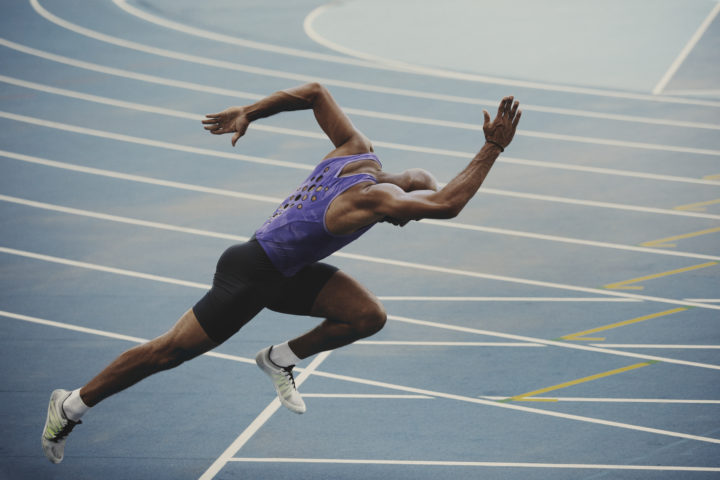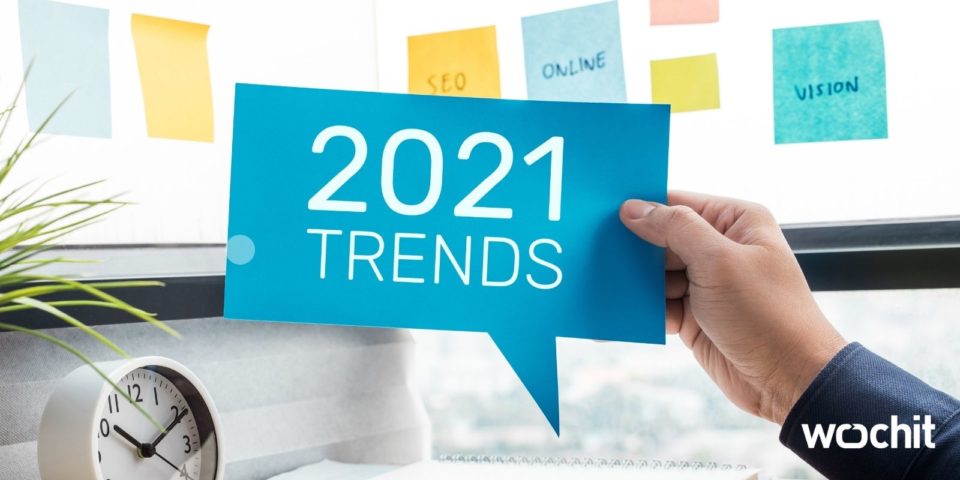
Video is quickly becoming one of the most popular forms of media for engaging people, telling stories, and motivating action. And it should be—video is highly engaging and effective.
But it’s not just the visuals that make video so effective. The music in the video plays an important role in connecting with the viewer and communicating the right message.
Let’s take a closer look at:
• The new Shutterstock music collection
• Why music matters in video creation
• 5 tips on how to choose (and use) music for your videos
New Shutterstock music collection for Wochit users
Music has such a powerful influence over emotion, narrative, and memory that it’s a must-have component of effective videos, whether promotional or editorial.
That’s why Wochit recently partnered with Shutterstock to help organizations produce authentic, compelling video content—with music—at scale. Wochit users can now access a brand new collection of Shutterstock music tracks natively right in the Wochit platform.
The Shutterstock and Wochit teams collaborated to curate a music collection that would resonate with Wochit users, pulling together:
• Hundreds of music tracks
• A variety of popular genres
• A wide range of paces and moods
Drew Silverstein, VP, Music at Shutterstock, remarks:
“Searching for the right music can be a huge challenge that slows down the video creation process. We’re thrilled to partner with Wochit to help creators find the perfect track for any project quickly and easily.”
Creating videos? Why music selection matters
There’s been a lot published on the miraculous power of music to influence our thoughts, emotions—even our physical beings. These are just a few of the most relevant impacts of music as they relate to creating videos.
Music evokes emotion
Psychology Today explains that “Music has the ability to evoke powerful emotional responses such as chills and thrills in listeners.” This works in a few ways, such as by affecting the pleasure systems in our brain, causing the release of dopamine, and evoking our own emotional memories. Music can connect with a memory or a feeling on a subconscious level and grant us feelings we cannot convey with words or visuals alone.
And different melodies, chords, or key changes in songs can elicit different emotional responses. Strings playing short and sharp notes in a major key were found to elicit feelings of happiness and excitement in 87% of respondents. But minor keys provoked a sense of sadness or melancholy in 83%.
Music also conjures a strong desire to move our bodies in coordination with the beat. Our heart rate even speeds up or slows down accordingly. Now, that’s impressive.
Apple is a brand that often nails the emotional music in video. Just try not to get excited about the iPhone 12 while watching this fast-paced, tension-filled ad:
Music helps to tell a story
Ever noticed that when you watch a thriller or horror film, you just know when something bad is about to happen? A big part of that is the music. The music score helps to tell the story and indicate how we interpret everything else on screen.
For example, famous movies like The Shining, Psycho, Jaws, and The Exorcist all use music to create tension.
Chevy offers a prime example of a brand using music to help tell a story.
In this commercial for the Chevy Sonic, the car is doing the crazy sorts of things a young, adventurous person may do as they come of age. The song lyrics of We Are Young by Fun. complement the story on screen, helping us to understand that we’re seeing important “firsts” or milestones in the Chevy Sonic’s life.
Here’s another strong example from Duracell of using music lyrics that help to explain the narrative in the video (dare you not to tear up at this one):
Music is memorable
How annoying is it when you get a song or a product ad stuck in your head? It can feel impossible to think of anything else! You might even remember popular jingles from when you were a kid.
That’s because music is memorable. Music can linger in a viewer’s mind, making both your video and your message more memorable, too.
For example, if you were around in the early 90s, you’d be hard-pressed not to remember Wrigley’s Doublemint Gum commercials (thanks to the music):
Videos with sound are on the rebound
You might be wondering how music fits in when so many videos are played silently in the viewer’s social feed. In our experience, sound—and music—is trending again.
Wochit Chief Product Officer Daphna Tsachor explains:
“Four years ago, we saw a trend of creators struggling to produce videos that engage, even with the volume off. That was an attempt to fit video into a text-based feed. Today, with the rise of Tiktok and other video-centric apps, our clients report a significant increase in videos played unmuted, even in traditional feeds.”
How to choose and use the perfect music for your video
With the new Shutterstock music collection, Wochit creators can now find music to fit any video more quickly and easily—but you still need to understand what that music ought to be.
Here are some tips to choose the right music for your video.
1. Choose the music before editing
Many people edit the footage together first, then choose the music—but this is backwards. If you select the music before you start editing, you can edit to the beat of the music from the get-go. Both the image and the audio should be aligned perfectly so they don’t come off as disjointed.
This video from The European Investment Bank is a perfect example of editing to the beat. Plus, take a look at how the video creator combined contextual audio (sirens and beeping) with visuals (ambulance) at :03 for a richer audio landscape.
2. Start with your goal
The music you choose for your video should reflect what you’re trying to accomplish and the message you’re looking to share. So, you must obviously have a clear goal and message as prerequisites to choosing effective music.
Your music choices will likely be drastically different depending on your scenario, such as:
• Selling a consumer product (e.g. car, chewing gum, laundry detergent)
• Explaining a service or technology
• Sharing a somber news story
• Motivating and inspiring donors
If your goal is tugging at your audience’s heartstrings, grab some tissues and check out this example from The Uplift:
Or if you’re looking to drive traffic to a one-day sale, this example from Wochit’s template collection effectively uses music to create excitement and a sense of urgency.
3. Decide on music’s role in your video
Will the music serve as a sound bed in the background? This is a common choice if your video will feature a lot of dialogue or if your video is explaining something in detail, like the World Food Forum example below. In this case, consider instrumental music without a lot of strong transitions. It shouldn’t catch the audience’s attention—they need to focus on the content.
Or will the music play a more bold, central role in your video? This is a common choice when your video contains less dialogue and is communicating a broader, less detailed message. This is your opportunity to choose music that demands attention and evokes more emotion, like this video from Wochit’s template collection that will have you playing air guitar.
4. Reflect the right feeling and tone
What feelings are you trying to evoke with your video? Selling a sports car will require a different tone and feeling than selling financial services. Sharing news about a royal wedding will need a different tone than sharing news about a devastating landslide.
It sounds self-explanatory, but always listen to the entire song to decide if it correlates to the overall tone of your video. Many songs begin with a certain tone that evolves as the story evolves. For example, a song that starts with more serious, somber tones may raise the pitch and become happier as the song goes on.
There are also subtle differences in a song that can change the pace. Listen to the drums—is there a half-time beat slowing the beat down? Is there a hi-hat making the beat sound faster than it is?
You’ll find that music selection can completely change the feeling of your video. For comparison, see how the different editorial angles in this Olympic gold story is reinforced by the shift in tone of these two distinct music choices:
> Video from The Uplift
> Video from Hearst in Italy
5. Align the music with your audience
Like all good communication, understanding your audience is key in video creation. When it comes to music, knowing your demographic can help you tailor your music choice to their interests.
For example, Legis Music suggests:
• Ambient might be perfect for a young audience in their twenties.
• Hip-Hop may be well-suited for a male and adolescent audience.
• R&B is often ideal for a female audience in their forties.
Cosmopolitan Italia certainly knows their target demographic, creating videos with music and visuals that suit their predominantly female audience:
But in the words of Pablo Picasso: “Learn the rules like a pro, so you can break them like an artist.” Playing with stereotypes and subverting obvious choices at interesting times can be highly effective, as it can create tension and catch your audience’s attention.
Ready to make a musical masterpiece?
We hope you’re feeling prepared and empowered to nail the message and emotion in your next video a la Apple. And if you need to find the perfect music track for your production, check out the new Shutterstock music library.
Is your organization not creating video with Wochit yet? Drop us a note below to get in touch.




